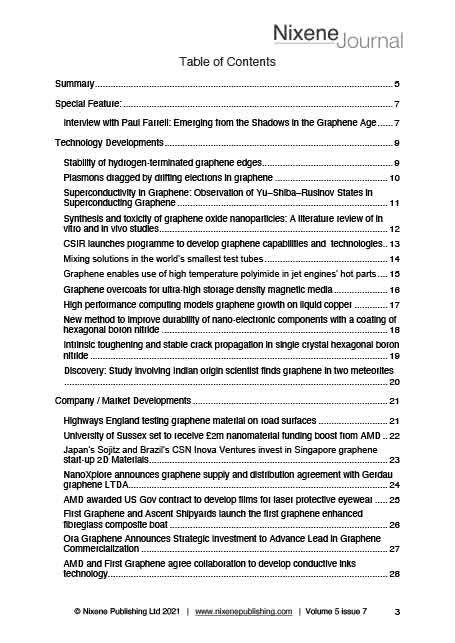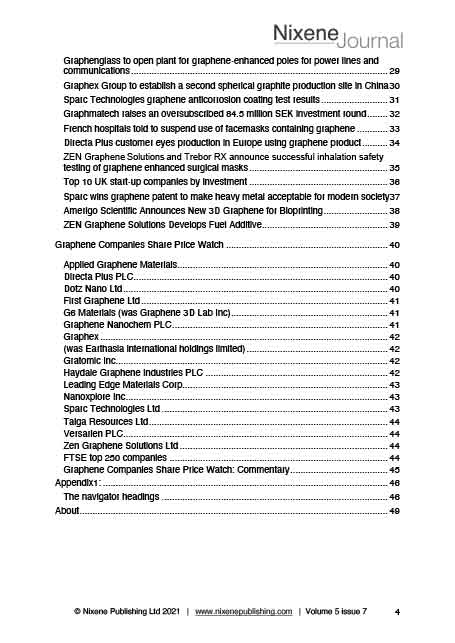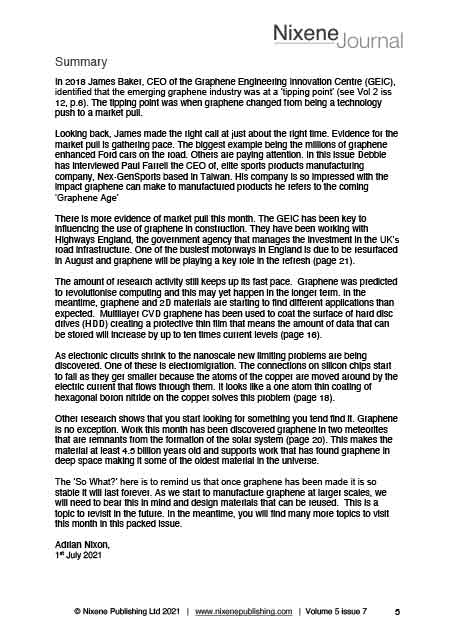Description
In 2018 James Baker, CEO of the Graphene Engineering Innovation Centre (GEIC), identified that the emerging graphene industry was at a ‘tipping point’ (see Vol 2 iss 12, p.6). The tipping point was when graphene changed from being a technology push to a market pull.
Looking back, James made the right call at just about the right time. Evidence for the market pull is gathering pace. The biggest example being the millions of graphene enhanced Ford cars on the road. Others are paying attention. In this issue Debbie has interviewed Paul Farrell the CEO of, elite sports products manufacturing company, Nex-GenSports based in Taiwan. His company is so impressed with the impact graphene can make to manufactured products he refers to the coming ‘Graphene Age’
There is more evidence of market pull this month. The GEIC has been key to influencing the use of graphene in construction. They have been working with Highways England, the government agency that manages the investment in the UK’s road infrastructure. One of the busiest motorways in England is due to be resurfaced in August and graphene will be playing a key role in the refresh (page 21).
The amount of research activity still keeps up its fast pace. Graphene was predicted to revolutionise computing and this may yet happen in the longer term. In the meantime, graphene and 2D materials are starting to find different applications than expected. Multilayer CVD graphene has been used to coat the surface of hard disc drives (HDD) creating a protective thin film that means the amount of data that can be stored will increase by up to ten times current levels (page 16).
As electronic circuits shrink to the nanoscale new limiting problems are being discovered. One of these is electromigration. The connections on silicon chips start to fail as they ger smaller because the atoms of the copper are moved around by the electric current that flows through them. It looks like a one atom thin coating of hexagonal boron nitride on the copper solves this problem (page 18).
Other research shows that you start looking for something you tend find it. Graphene is no exception. Work this month has been discovered graphene in two meteorites that are remnants from the formation of the solar system (page 20). This makes the material at least 4.5 billion years old and supports work that has found graphene in deep space making it some of the oldest material in the universe.
The ‘So What?’ here is to remind us that once graphene has been made it is so stable it will last forever. As we start to manufacture graphene at larger scales, we will need to bear this in mind and design materials that can be reused. This is a topic to revisit in the future. In the meantime, you will find many more topics to visit this month in this packed issue.
Adrian Nixon,
1st July 2021










